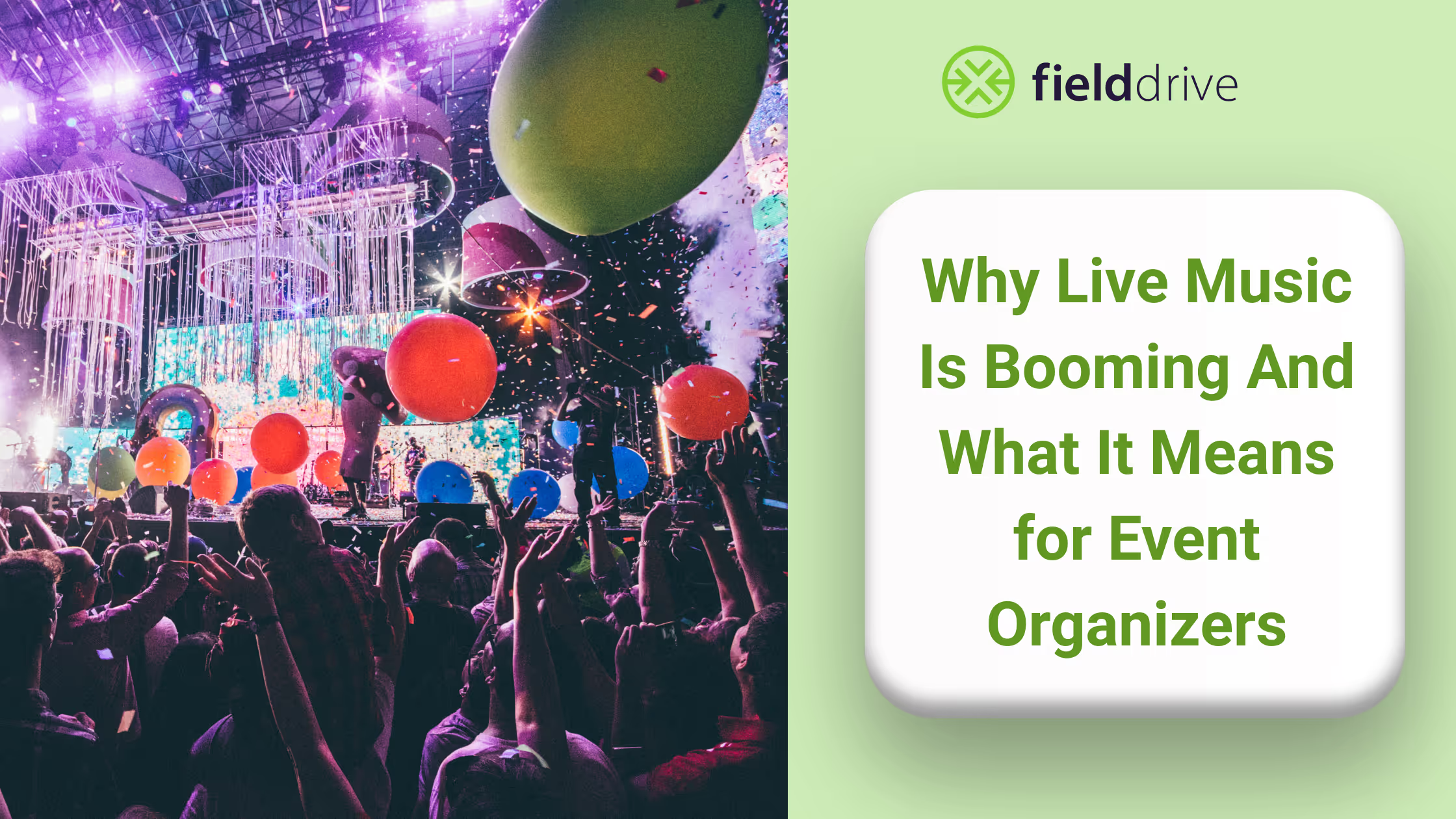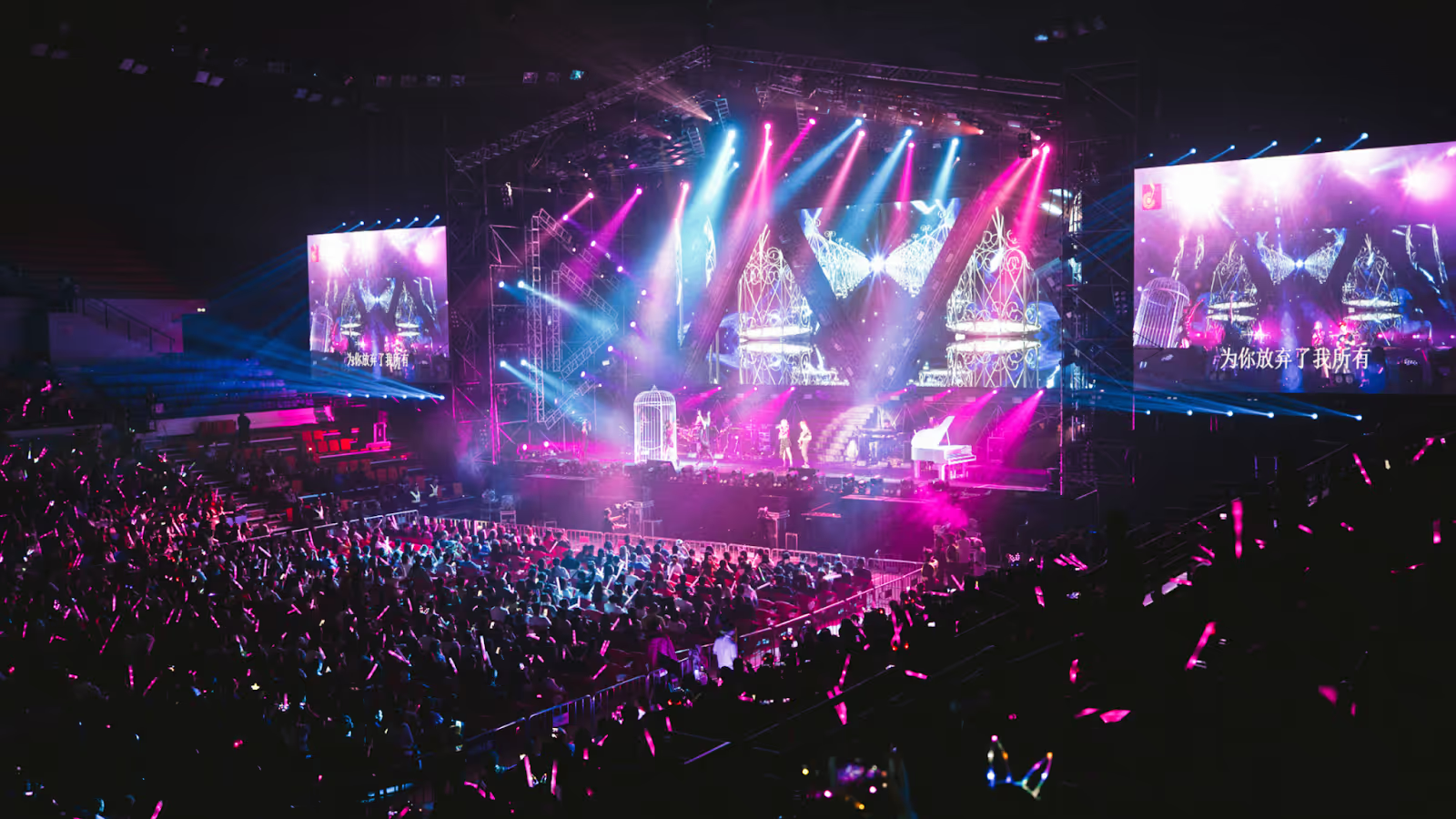Why Live Music Is Booming And What It Means for Event Organizers
Live music is experiencing a resurgence like never before. With the younger generation gravitating more towards experiences rather than passive entertainment, large-scale event organizers can fine-tune their event planning practices to host better and more value-rich concerts and live music events.

CONTENT
There’s a reason every major musical act is adding more stops, more dates, and more spectacle these days. From sold-out stadiums to packed club gigs, live music is now the fastest-growing segment in global entertainment.
And it’s not just a trend.
It’s a recalibration of what audiences want and how organizers need to deliver.
According to Goldman Sachs, live music revenue is set to hit $38.2 billion in 2025, up from $34.6 billion in 2024. That’s a 10% jump, nearly doubling the previous year’s growth rate. Long-term projections push that figure to $67 billion by 2035, signaling a sustained demand rather than just a post-pandemic spike.
So what’s driving this boom, and what should organizers be doing to stay ahead of it?

A Shift from Passive to Participatory
Streaming made music more accessible. But live performances are making music meaningful again. Audiences, especially Gen Z and younger millennials, are looking for high-impact, emotionally immersive experiences. The kind you can post about, remember, and relive.
For artists, that means touring more frequently and across more regions. For organizers, it means preparing for:
- Increased touring volume across both primary and secondary markets
- Shorter cycles between booking and performance
- More competition for audience attention and spending
Infrastructure Is Catching Up
Across the music industry, venue development is also accelerating. From private promoters to municipal governments, investors are funneling capital into adaptive, future-ready spaces that can host everything from sold-out concerts to esports tournaments and brand activations.

For instance, Live Nation, the world’s largest promoter, recently announced plans to invest $1 billion into 18 new venues across the U.S., many of which will be mid-sized, multipurpose facilities in emerging metros.
This democratizes touring, allowing mid-tier acts and indie performers to build viable tour schedules without relying solely on coastal capitals or mega-arenas.
What This Means for Event Organizers
1. Venue Strategy Is Now a Business Model
Organizers should think beyond “event space” and start treating venues as dynamic assets. The growth in live music is driving demand not just for large arenas, but for adaptive, tech-integrated spaces that support hybrid activations, flexible staging, and community engagement.
2. Experiential Design Is Non-Negotiable
Modern audiences expect more than a performance. They expect an experience. That means:
- VIP lounges with personalized amenities
- Fast, touchless entry and payment
- More tech integration that creates more immersive experiences, such as AR moments or live-streamed backstage feeds
- And much more…
These aren’t just bonuses or nice-to-haves anymore. They’re baseline. And the best organizers are designing them into the event journey from day one.
.avif)
3. Marketing Has to Work Harder and Faster
With so many events happening through out the year, the window to capture attention is shrinking. Audience behavior is shifting toward shorter buying cycles. People are making ticket decisions closer to show dates, especially for non-marquee acts.
To accommodate this change in attendee behavior, marketers need to:
- Use behavioral data to segment and retarget audiences
- Create modular content for platforms like TikTok, YouTube Shorts, and Reels
- Layer urgency through dynamic pricing and early access offers. FOMO is a powerful tool, and marketers need to learn how to wield it properly.
4. Operations Must Be Scalable by Design
Hitting 90%+ ticket sell-through is now considered the break-even point for many large-scale events.
That kind of margin pressure means organizers can’t afford to be static. You need:
- Flexible vendor contracts that account for changing capacities
- Seamless check-in and badging
- Scalable staffing models
- Contingency budgets for surge pricing on logistics or tech
5. Sponsorship Has to Evolve Too
With more eyeballs and deeper emotional resonance, live music events offer premium opportunities for brand sponsors. But sponsors are asking for more: live integrations, exclusive content, backstage access, and sustainability credentials.
Organizers who can weave these elements into the event framework will win larger, longer-term deals.

Conclusion
The live music boom isn’t just good news for artists and audiences. It’s a massive opportunity for the entire events industry. It opens new avenues for the organizers and marketers to engage attendees, thus creating a sustained interest in events. Isolating the needs of your target attendees and leveraging modern tech and planning strategies to meet them can help organizers bring more attendees to events, and at a regular cadence. The organizers who win in this new era will be the ones who:
- Embrace flexibility in format and footprint.
- Prioritize the audience experience, not just attendance.
- Treat venue and vendor relationships as strategic partnerships.
- Leverage cutting-edge event tech to its maximum potential.
- Think beyond the show to the full lifecycle of engagement.
Want to learn how fielddrive can help you elevate your events?
Book a call with our experts today



.png)
.svg)
.svg)
.svg)

.svg)